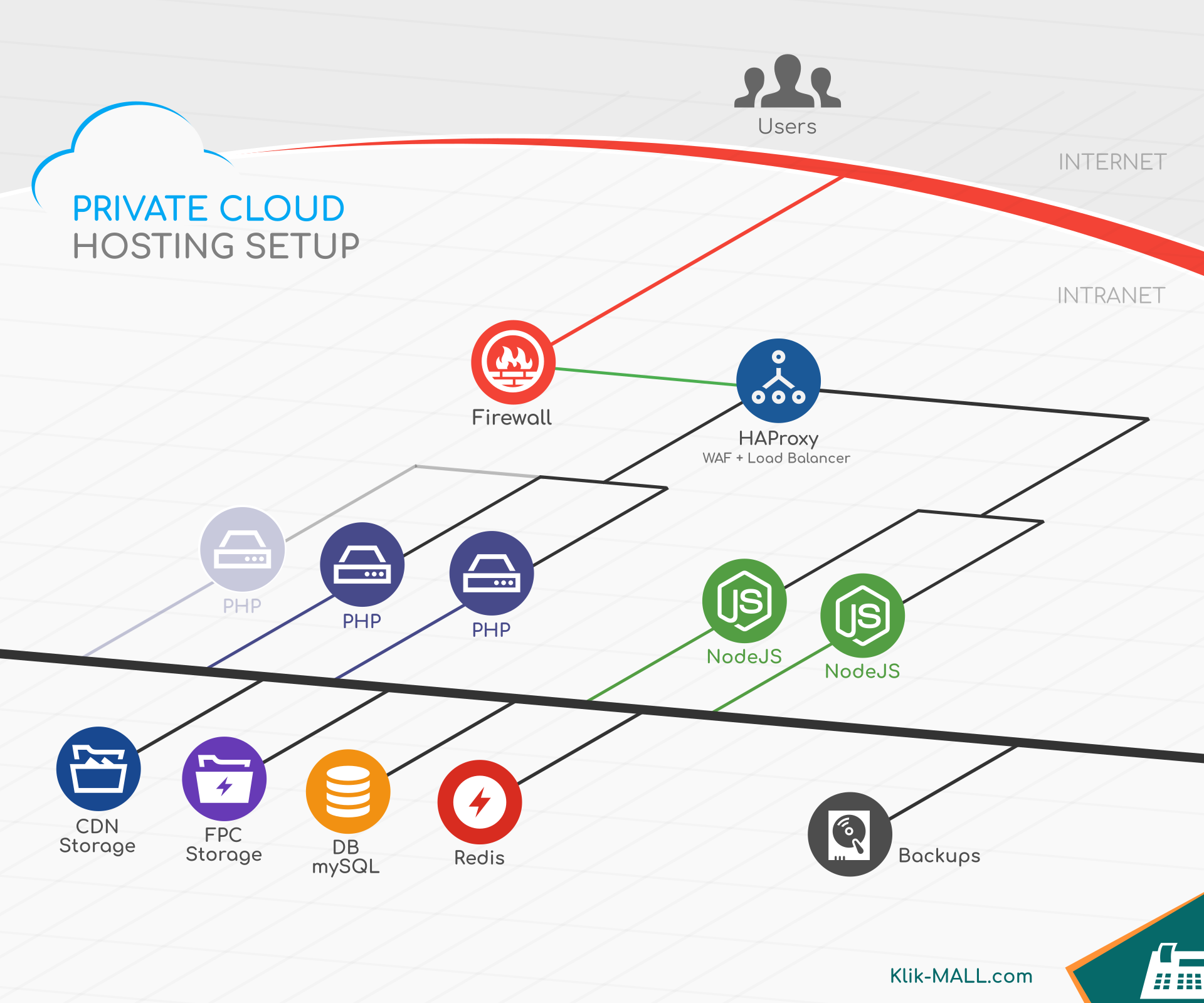How we optimized our Private Cloud
to provide high performance webhosting on a PHP / LEMP stack
This is an overview of our private webhosting cloud for clients using Klik MALL SaaS platform for their websites and webshops.
It can also serve as a blueprint for high performance Wordpress, WooCommerce, Magento setups as these also run on PHP / LEMP.
Quick summary
To highlight the added value of a setup as this private cloud, here are the main differences in comparison to a common "All-in-one" Shared/VPS webhosting:
- HAProxy is a special, multi purpose server. At first it's used as a WAF (Web Application Firewall) that protects resources from "usage abusers", "useless traffic by bots" etc. Then it's used as a load balancer that provides horizontal scaling for PHP code execution, NodeJS services etc. It also gives us an option to use smaller, but faster and better-suited CPUs to provide better UX with faster loadings.
- Using the fastest CPU for PHP can reduce TTFB by 30%+ compared to common hosting CPUs. Important thing to notice here is that "best CPU for the job" might not be suitable for common all-in-one hosting packages, but is a perfect fit in a cluster setup like one described below.
- Using Intel Optane NVMe for Database means using the single best storage drive for this workload. Having enough RAM and optimized queries are 2 best things you can do for database performance. Intel Optane is next in that line.
- A special filesystem (ZFS) for NAS/media files to provide best "bang for buck" CDN for static files.
We divided core tasks for serving a website/webshop and optimized it in terms of software & hardware to provide max. performance + expandability for bigger loads.
Continue if you want to find out more about how this setup works.
Common path of a web request through the cloud
- Common path of a web request through the cloud
-
1Firewall passes https (80) and https (443) traffic to HAProxy.
-
2HAProxy checks users's request with WAF rules. If all OK, it selects a backend to process the request.
-
3Main app. runs on PHP backend servers which are load-balanced in "Sticky Session" mode.
-
4Data is stored on NAS/CDN server, FullPageCache storage, DB, Redis and others.
-
5PHP processes the request and returns a response to HAProxy. It compresses and encrypts response for the user.
-
6One exception is direct serving of static files via CDN server. This path is: HAProxy > CDN > HAProxy > User.
-
7NodeJS servers are used for supporting services like exporting invoices (e.g. HTML2PDF) and load-balanced in "Round Robin" mode.
- LB - load balancer
- WAF rules: whitelist, blacklist, good/bad bots, usage rate...
- Sticky Session mode.
- Round Robin mode.















